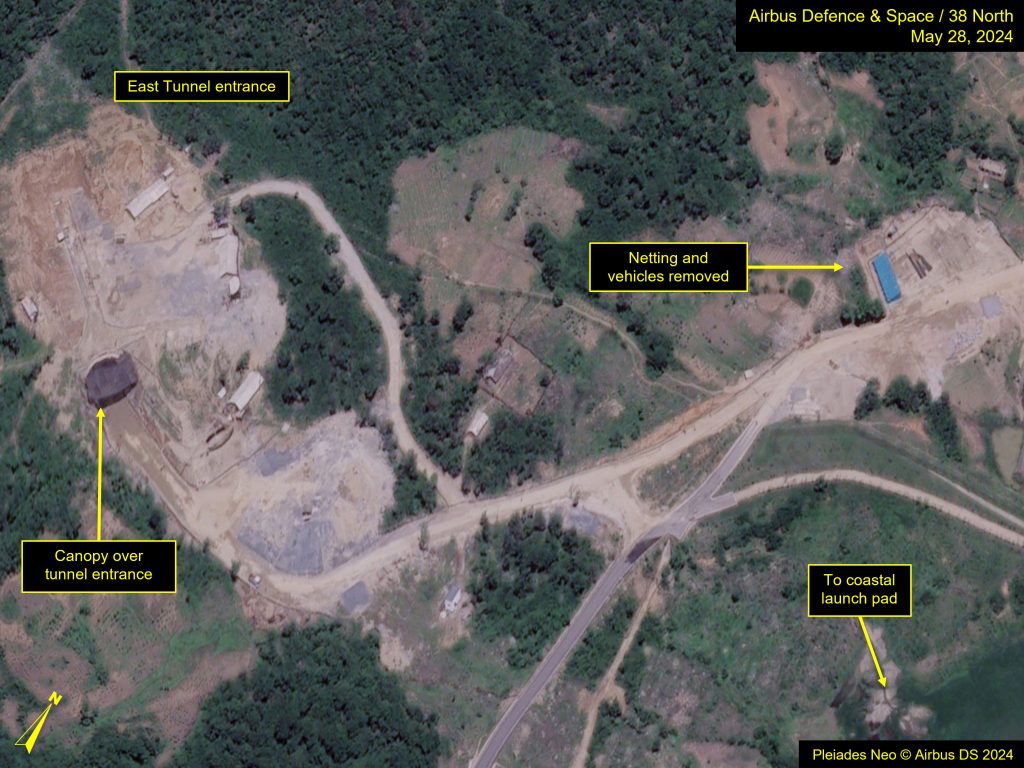Sohae Satellite Launching Station: Activity Prior to Failed SLV Launch Attempt
On May 27 at 10:44 p.m. Korea Standard Time (KST), North Korea conducted a launch of a Malligyong-1-1 reconnaissance satellite with a “new-type satellite carrier rocket.” The launch, which failed in its first-stage flight likely due to a “newly developed liquid oxygen + petroleum engine,” was Pyongyang’s first satellite launch attempt this year.
Commercial satellite imagery of the Sohae Satellite Launching Station from May 27—11 hours prior to the launch—and May 28 reveal suspected launch preparation signals, particularly the presence of vehicles and equipment near the launch pad covered by camouflage netting in the lead-up to the launch. As North Korea’s space launch program continues to evolve and modernization efforts continue around the complex, it is expected that new launch indicator patterns will emerge.
Previous Launch Attempts
Kim Jong Un delivered instructions to expand and modernize Sohae Satellite Launching Station following his visit to the site in 2022. Among the enhancements made was the addition of a coastal launch pad, which has now been used for all of North Korea’s reconnaissance satellite launch attempts since its construction—three in 2023 and one so far this year.
To date, the only reliable pre-launch indicator has come from North Korea itself through its issuance of maritime navigation warnings ahead of each launch. Such warnings are required under international law and warn ships to stay clear of areas where rocket stages will fall to the ocean.
Consistent signs of preparations at the launch center have been much harder to determine, in part due to a lack of high-resolution imagery captured in the days or hours prior to previous launches.
May 27 Potential Indicators
Commercial satellite imagery captured at 11:45 a.m. KST on May 27, 2024, 11 hours prior to the launch, revealed a potential set of pre-launch indicators. However, these specific indicators may evolve or become obsolete as the expansion of Sohae continues.
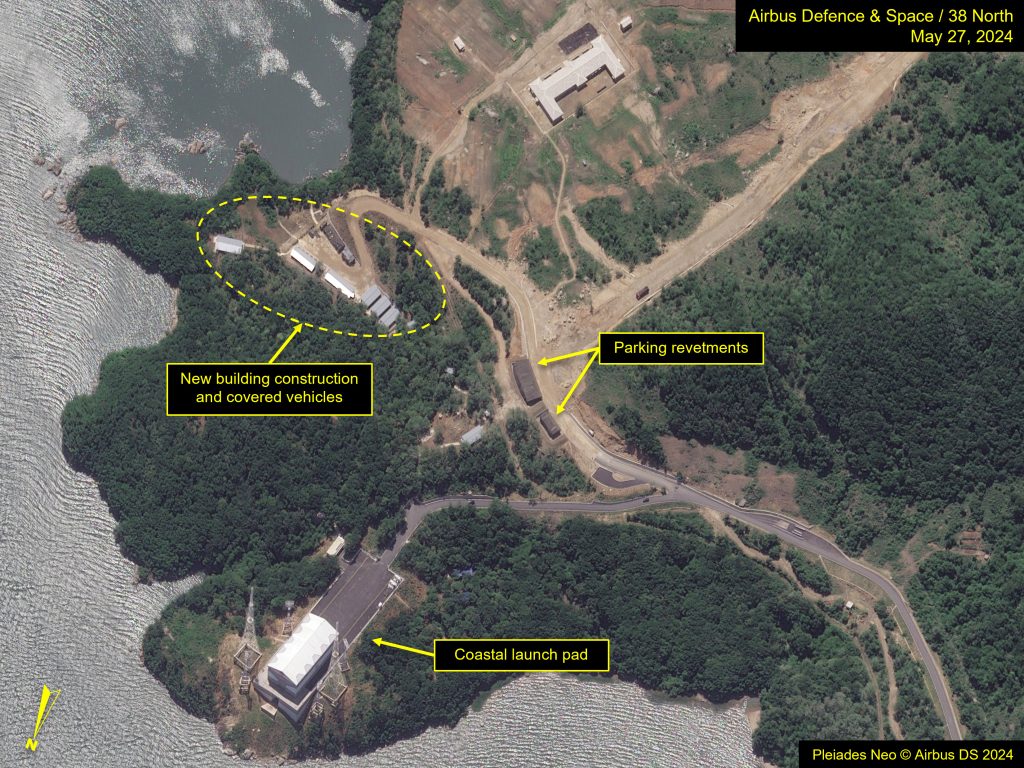
Coastal Launch Pad
Pre-launch imagery indicates approximately eight to ten vehicles and/or support vans positioned side-by-side and covered with camouflage netting in an area near the launch pad where support buildings have been under construction since mid-April. The netting obstructs a clear view of the exact number and type of vehicles present. New vehicles were observed in imagery from May 28, while the previously observed vehicles and equipment remained under the netting. It is to be seen how long these vehicles remain in the area, though it is likely their presence is temporary and tied to the launch.
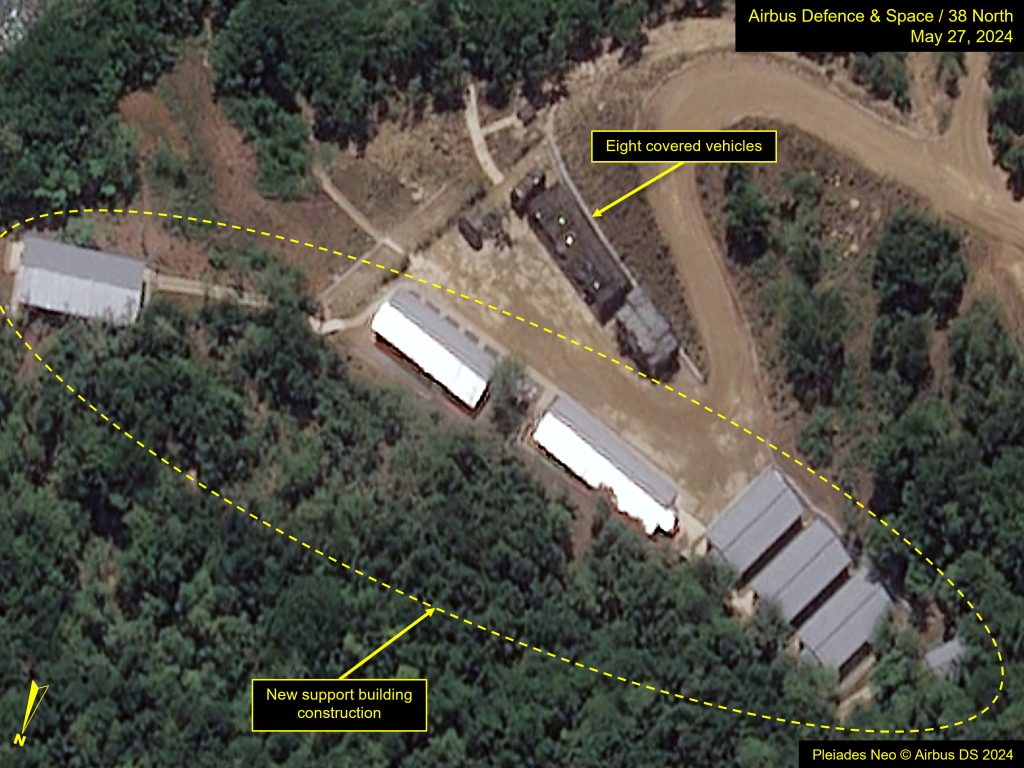
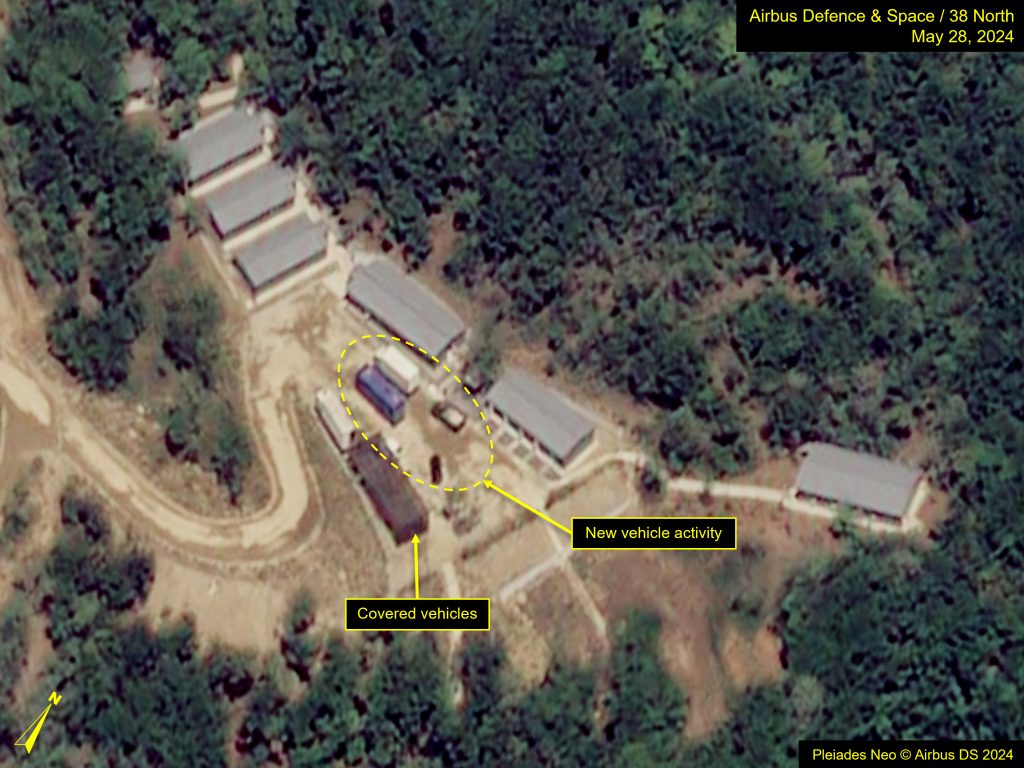
Vehicles are also visible parked side-by-side in two revetments located near the launch pad, covered by the same kind of camouflage observed at the new support building area. The revetments were constructed in April, separated from the pad by hilly terrain and protected with an earthen berm.
Vehicles and materials appeared to begin building up in these revetments by May 14, although lower-resolution imagery precluded their precise identification. It is possible these could include tank trucks carrying liquid oxygen or other fuel required for the launch.
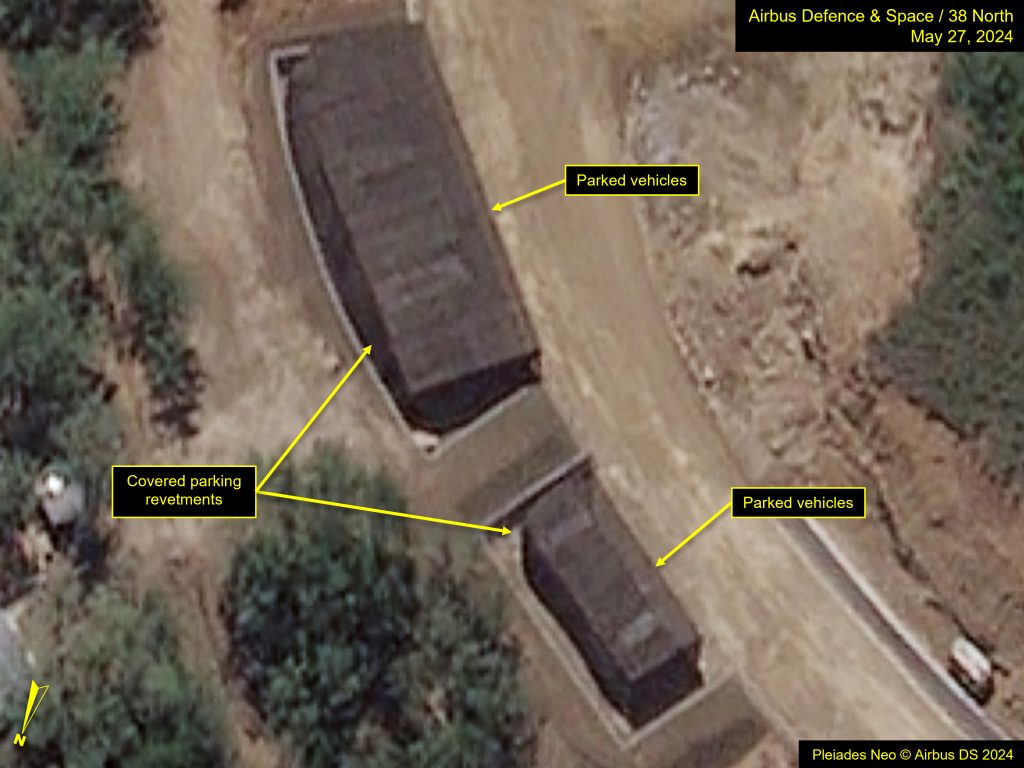
The items remained on imagery from May 28 but will likely be removed soon.
East Tunnel Area
On imagery from May 27, three large vehicles were parked side-by-side with camouflage netting over them in a graded area near the east tunnel entrance.
Though the netting obscures the exact nature of these vehicles, they each measure approximately 16 meters long and two meters wide. In comparison with the Chollima-1 launch vehicle—with the first-stage measuring approximately 15.0 meters and the second and payload with kick-stage combined nearly doubling that—it is possible they were used to transport launch vehicle segments to the coastal launch pad for assembly. The vehicles had departed by May 28.
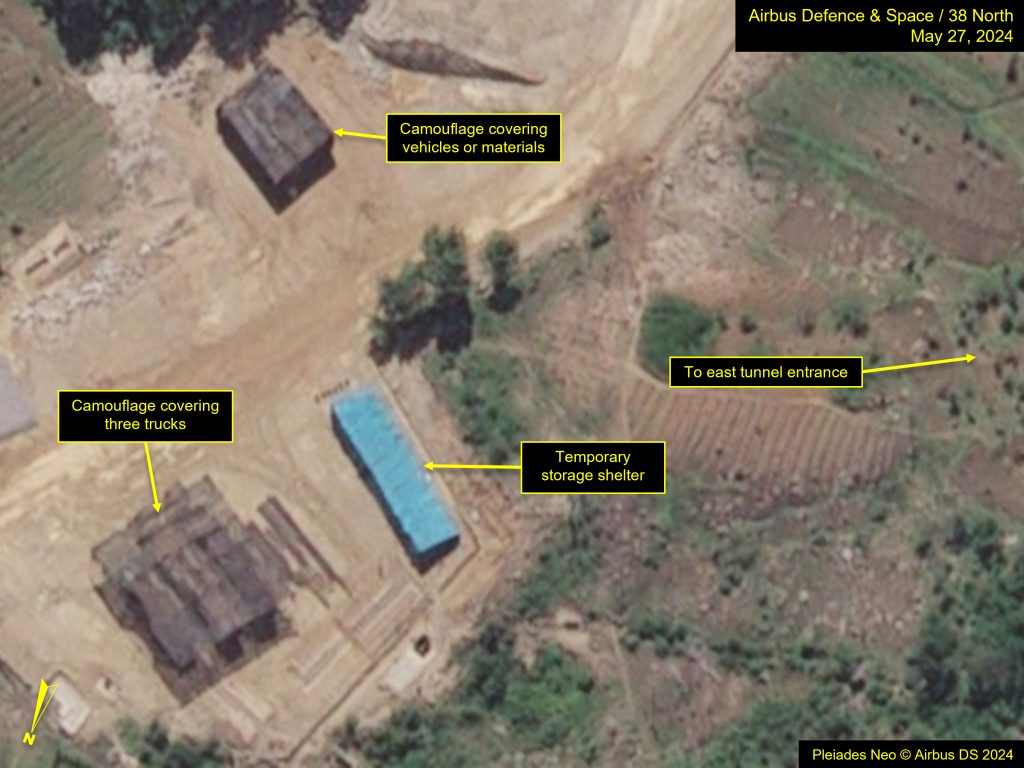
The tunnel appears to connect the east and west parts of the site but could also provide access to an underground storage facility. Over the east tunnel, a canvas or camouflage canopy was observed stretched over the entrance on imagery from May 27. The purpose of this is unclear.
